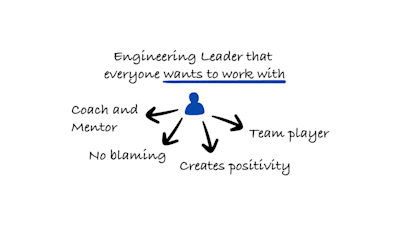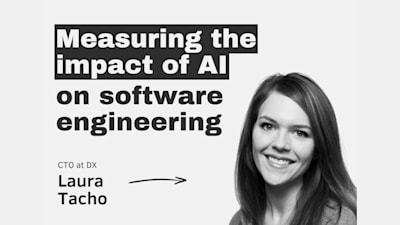
on
*sdílené články jsou řazeny od těch podle mě nejlepších po dobré

on

on www.tssg.ca
In today’s hyper-connected workplace, communication can be both beneficial and overwhelming. The 2024 State of Business Communication Report shows that workers spend 88% of their week communicating, with 84% of leaders utilizing more channels than ever. The rise of remote and hybrid work further complicates this, leading to constant emails, messages, and meetings. Leaders must address communication overload to foster a productive environment. This blog will define communication overload, discuss its causes, signs, and impacts, and suggest effective management strategies for leaders.

on coggno.com
Poor communication can lead to misunderstandings, erode trust, and create conflict—nearly 70% of workplace issues arise from this. These breakdowns impact relationships, career growth, and personal happiness. This blog highlights ten common communication roadblocks and offers tips to avoid them, helping you become a master communicator.

on www.atlassian.com
A one-on-one meeting with your manager is a valuable chance to build rapport, boost engagement, and enhance team performance. Whether you're anxious, excited, or uncertain about the agenda, these conversations can significantly impact your job performance and professional growth. To make the most of your one-on-one, understand its importance, prepare effectively, engage during the discussion, and follow up to foster trust with your boss.

on cerkl.com
A cascading communication strategy has multiple advantages for large organizations. Here’s how to develop a successful plan that will boost efficiency and trust.

on slack.com
Do you have important messages to convey at work but are unsure which communication channels to use? It turns out that effective workplace communication has something in common with comedy: it’s all in the delivery! With so many ways to share your messages, whether with a group or an individual, choosing the right communication method can be overwhelming. Is it appropriate to text your manager? Should you email or direct message a coworker for a quick question? And does anyone still use the phone for conversations? To help you decide, follow these three steps to identify the best communication channel for your needs.

on www.hipeople.io
Discover how bottom-up communication can enhance engagement, foster innovation, and improve decision-making in your workplace. This approach goes beyond merely sending feedback upward; it aims to create an environment where everyone feels involved and valued. When employees are empowered to share their thoughts, ideas, and concerns, it fosters a sense of ownership and connection to the company. Leaders who actively listen and act on employee feedback build trust and cultivate a culture of transparency and respect. By prioritizing open, honest dialogue, organizations can access a wealth of ideas and perspectives that might otherwise be overlooked. Ultimately, bottom-up communication is not just a method for improving communication; it is a way to cultivate a workplace where people feel truly connected, motivated, and excited about the future.

on cerkl.com
Internal communications, employee communication, employee newsletters, and employee engagement thought leadership offer best practices and metrics. These metrics and tools help you determine what matters in your company or team.

on www.yourthoughtpartner.com
A strategic internal communication plan helps you achieve and improve business results. Find out how to create an internal communications plan in 7 steps. The article includes templates for your plan.

on www.axioshq.com
Explore seven key internal communication channels you should use to boost employee engagement and streamline workplace operations. Effective internal communication channels are crucial for maintaining a cohesive work environment, especially as more companies adopt hybrid and remote work models. 59% of leaders admit they’re struggling to evolve their communication strategy for these teams.

on meetgeek.ai
Discover the future of remote work in our 2025 guide to asynchronous communication, exploring tools, strategies, and best practices for efficient collaboration.

on mirro.io
How to leverage HR communication metrics, AI-powered tools, and software to boost engagement and streamline internal communication. This article outlines a strategic approach to HR internal communication, focusing on data-driven methods to boost employee engagement, trust, retention, and creativity. It covers communication flows, channels, and creatinThis article explains how to leverage HR communication metrics, AI-powered tools, and software to enhance engagement and streamline internal communication. It outlines a strategic approach to HR internal communication by focusing on data-driven methods that improve employee engagement, trust, retention, and creativity. The discussion includes the various communication flows and channels, as well as how to create an effective strategy. This involves setting clear objectives, utilizing technology such as internal communication platforms, and tracking key metrics.g an effective strategy, including setting objectives, using technology like internal communication platforms, and tracking key metrics.

on elearningindustry.com
From emails to internal virtual bulletin boards, discover how you can choose the right mix of communication channels for your company.

on hbr.org
Information overload is the inevitable result of the modern organization’s always-on, more-is-better approach to communication. Unfortunately, it is also a driver of employees’ disengagement and poor decision making. While we are all, as employees and leaders, affected by this reality, the onus is on the company communicators themselves to craft a low-burden culture. It will require energy, expertise and coordination to architect and reinforce more human-centric communication practices.

on hbr.org
For too long, communicating strategy has been an afterthought. Executives have shared long, bombastic documents or withheld critical information and expected people to just “get it.” And it hasn’t worked. Greater external uncertainty, collaboration, employee anxiety, and organizational openness demands a change of approach. The author presents five actions that will improve the clarity and quality of communication, enabling stakeholders to make a more substantive and meaningful contribution to the strategy.
on hbr.org
Digital Reprint from 2009 HBR: The value of information in the knowledge economy is undeniable, but so is its potential to overwhelm consumers. HBR contributing editor Hemp discusses practical strategies for individuals and organizations to avoid the pitfalls of having too much of a good thing. Ready access to useful information comes at a cost: as the volume increases, the difference between what is worthwhile and what is distracting begins to blur. Ultimately, only a multifaceted approach will help you and your organization manage the complex challenge of information overload. The key is to handle this challenge while still appreciating the valuable role that information plays.

on hbr.org
Podcast from 2009 with Paul Hemp, HBR contributing editor and author of the HBR article “Death by Information Overload.” Although the year of publication is early, before the advent of social media and continuous interruption, it is worth listening to!
on hbr.org
Every leader operates from a set of invisible assumptions that quietly shape their decisions and interactions. Some of these internal beliefs propel us forward—but others, what I call hidden blockers, undermine our best intentions without us even realizing it. When you’re in a leadership position, limiting beliefs don’t just stunt individual growth; they ripple outward to constrain your team members. One of the most dangerous for senior leaders is the hidden blocker “If I can do it, so can you.” If you think it is not a dangerous one read the article and see for yourself!
on open.spotify.com
Techniky na to, jak zvládat komunikaci tam, kde běžné doporučované taktiky nestačí!

on hbr.org
Numerous researches have shown that we forget much of what we experience in a day. Knowing this, how do you create messages so there is a better chance of people remembering them? The author uses concepts from memory science to help you craft messages — whether it’s a presentation, an email, or a speech — that will be likely to stick.

on newsletter.eng-leadership.com
As a leader, your evaluation is no longer based solely on your individual contributions; instead, it depends on the success of your team and projects. This is a crucial point to remember as an engineering leader. This article outlines how to be an effective manager in the tech industry, highlighting specific traits that are essential for success.

on newsletter.pragmaticengineer.com
Laura Tacho, CTO of DX, shares findings from 180+ companies on how AI is really impacting dev productivity, what most teams get wrong, and why measuring dev experience first is critical.

on hbr.org
When stepping into a new leadership role, giving feedback can feel risky—but delaying it can be just as costly. Thoughtful, well-timed feedback can build credibility, strengthen relationships, and set the foundation for a culture of trust and accountability. Four strategies can help leaders in a new role offer feedback with clarity and confidence: assess the organizational landscape, fast-track trust through vulnerability, align feedback with team members’ aspirations, and balance directness with empathy. Thoughtful, well-timed feedback can build credibility, strengthen relationships, and set the foundation for a culture of trust and accountability.

on hbr.org
Like any living systems, teams need regular care, attention, and intentional renewal to thrive. Whether driven by restructuring, relationship tensions, demotivation, or strategic pivots, there comes a moment when a team needs more than a tweak. It needs a relaunch. By pausing to reassess, reset, and realign, leaders can reenergize their teams and strengthen trust. Relaunching a team isn’t a sign of failure—it’s a sign of leadership.

on www.fastcompany.com
Scientist Zorana Ivcevic Pringle has studied creativity for decades. Here’s her best advice for tapping into a creative mindset.
Přihlásit se k odběru nově přidaných inspirativních tipů pomocí RSS
Vedete technologický tým, máte na starosti marketing či HR v tech firmě a rádi byste se (nebo nejen sebe) rozvíjeli, ale nevíte, kde začít? Máte pocit, že se potřebujete ponořit do dalších témat a jen zajít na nejbližší akce či meet-up nemusí být dost?
Vyplněním e‑mailu se přihlašujete k obsahovému newsletteru tvůrce a souhlasíte s obchodními podmínkami.
